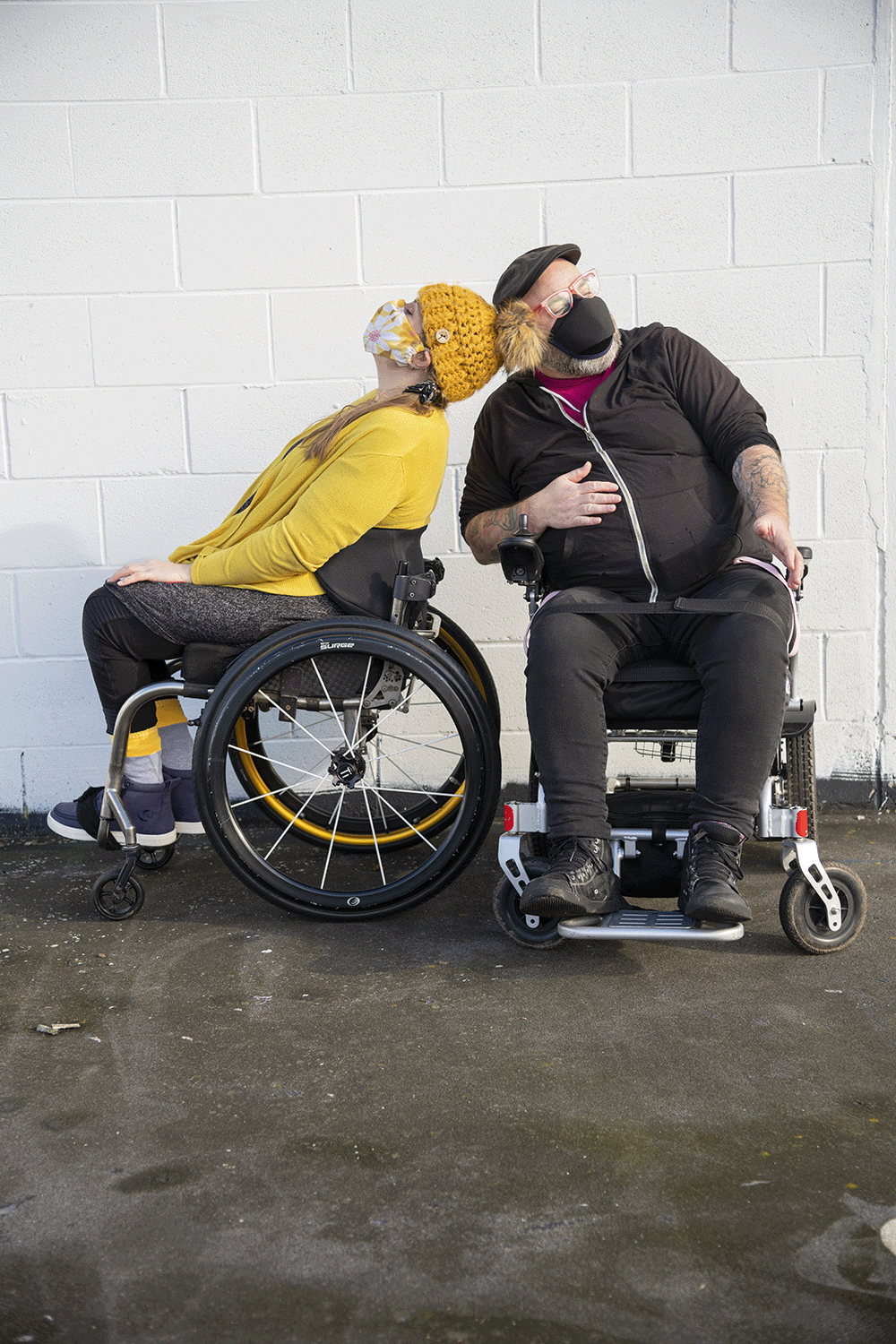Harmanie Rose + romham pàdraig gallacher

Harmanie Rose is a disabled dancemaker, facilitator, and performer who lives and works on the traditional, ancestral, and unceded territories of the Coast Salish peoples. Harmanie is investigating ways for care and inclusivity to inform and influence artistic choices. She is a founding member of iDance Edmonton (CRiPSIE) and All Bodies Dance Project (Vancouver). Her choreographic work has been presented by Vines Art Festival (Vancouver), and All Bodies Dance Project. She’s been a part of numerous dance on film projects as a choreographer, performer, and collaborator including Sanctuary (a collaboration with Rianne Svelnis and Martin Borden, 2019), Inclinations (created by Alice Sheppard, 2019) Virtual-os-city (a collaboration with Kelsie Acton, 2021), Parts of Me and Ho.Me (Carolina Bergonzoni, 2019). She has trained with Donna Redlick (Soma Dance), All Bodies Dance, Propeller Dance, CandoCo, and Axis Dance Company. In 2018 she attended UCLA’s inaugural Dancing Disability Lab where she contributed to research and discussion around the scope of Critical Disability Studies, choreography, and the emergent practices of inclusive dance. She has danced in works by Naomi Brand, Carolina Bergonzoni, Rianne Svelnis, Alice Sheppard, Kelsie Acton, and Lindsey Eales.
romham pàdraig gallacher: i’m a white 1.5 generation settler from Glasgow, Scotland living on the stolen, un-ceded ancestral territories of the Musqueam, Squamish and Tsleil-Waututh peoples. Dance and protest are intrinsically linked to place, so i continue to ask myself: How & on whose back did/do i get here? What is it for me to dance or protest here at all? What am i doing with my body/ dance/ protest in resistance to the capitalist white supremacist colonial project of turning the living into the dead?
As a multiply-disabled queer and trans interdisciplinary artist, at 42 i made my first foray into dance with the All Bodies Dance Project in 2014. It connected deeply and has shaped my life, art and protest ever since. ABDP made space for me to co-create, imagine, and live beautiful futures with other crips, and also build trust with able bodied folks in a deeper way -- something i’ve rarely experienced in non crip-centred “radical” spaces--allowing for healing i’d not imagined possible.
i’m moved by resistance, interdependence, failing, healing generational trauma, notions of “home” and how bodies move, change and struggle together & apart across time & place.
Artist’s Statement
The connections between dance and protest are deep. Not only the personal protest involved as disabled folks just moving in public; but taking space and commanding, shifting, and upending the inevitable gaze as visibly disabled people in a world that so often wants us silent, agreeable, or dead.
When we explore crip time, crip presence, crip brilliance through dance, through protest, we’re invoking and inviting our crip ancestors and accomplices in witness, resistance and remembering.
Throughout our process, we let questions guide us to more questions. We asked each other: How does showing up for ourselves allow us to show up and support others, and vice versa? What possibilities do we create when we allow for that support to look many different ways, especially when we stay curious and authentic in our own embodiments and experiences? These questions allowed us to create a framework we could return to, that supported our own individual abilities, experiences, and curiosity. We kept coming back to the cyclical exchange of breath that allows for → movement which allows us to → give support and inspiration and → that always cycles back to breath. Who are we in these exchanges? Who do we want to be to each other, to this place and time we find ourselves?
“We in our cripness create new forms of protest the ableds could never imagine.” - Leah Lakshmi Piepzna-Samarasinha, Cripping The Resistance
Links
Artist's website: All Bodies Dance
Disability Visibility Project: 26 ways to be in the struggle, beyond the streets
Leaving Evidence: Wherever You Are Is Where I Want To Be: Crip Solidarity
Disability Visibility Project: Cripping The Resistance: No Revolution Without Us
Sins Invalid: 10 Principles of Disability Justice
Radical Access Mapping Project: Community Statement in the aftermath of the anti-Asian, white supremacist and misogynistic murder spree of Asian Women in Atlanta